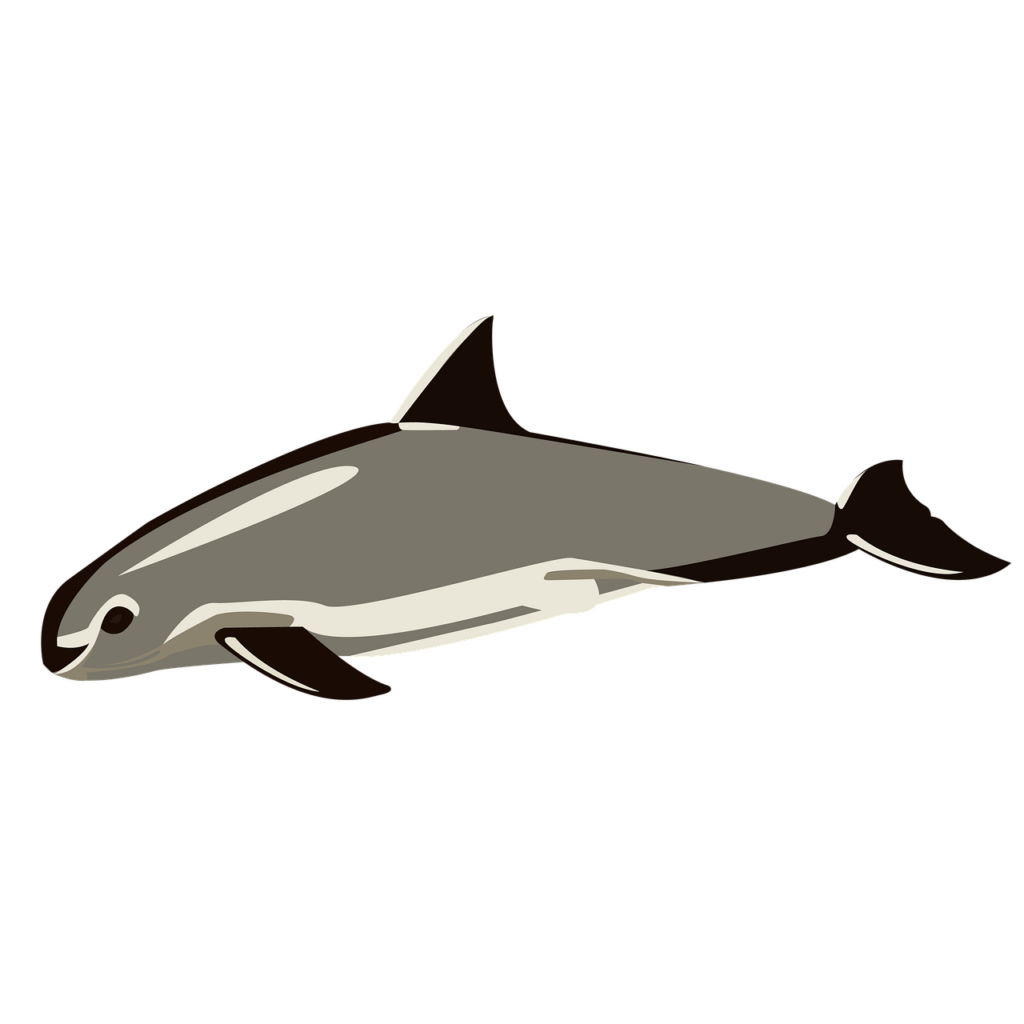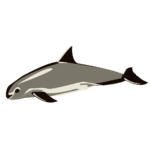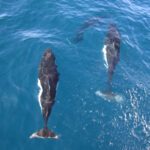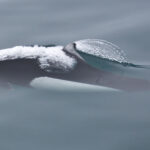The Vaquita, nicknamed the “little cow,” is a critically endangered porpoise found in the Gulf of California. With only 10 individuals left, their unique black markings around the eyes and lips make them distinct from other porpoises.
They live in shallow and murky waters, using echolocation to feed on small fish and squid. Their population is declining rapidly due to illegal fishing practices, such as gillnets, trapping, and drowning these innocent creatures.
Conservation efforts are challenging in this remote region, as enforcing regulations proves difficult. International initiatives have been set up to protect their habitat and prohibit gillnet fishing, yet the vaquita population continues to decrease rapidly.
To save these remarkable animals, we must continue our commitment to enforcing stricter regulations and raising awareness of the vaquita’s plight. Together, we can ensure a future where this beautiful species thrives again.
Key Takeaways
- The vaquita is a critically endangered species of porpoise that is found in the Gulf of California.
- It is estimated that there are less than 10 vaquitas left in the wild, making it the most endangered marine mammal in the world.
- The main threat to the vaquita’s survival is illegal fishing, specifically the use of gillnets to catch a fish called the totoaba.
- The totoaba is highly sought after for its swim bladder, which is considered a delicacy in some Asian countries and can fetch a high price on the black market.
- Efforts are being made to protect the vaquita, including the establishment of a vaquita refuge and a ban on gillnet fishing in the area.
- However, these measures have not been enough to save the vaquita, and urgent action is needed to prevent its extinction.
- Conservation organizations and governments are working together to develop and implement a comprehensive plan to save the vaquita, including the use of alternative fishing methods and increased enforcement against illegal fishing.
- Public awareness and support are crucial in the fight to save the vaquita, as increased pressure on governments and consumer demand for sustainable seafood can help drive change.
- The vaquita’s plight serves as a reminder of the urgent need to protect and conserve our oceans and the incredible biodiversity they contain.
The Origin and Habitat of Vaquita
The vaquita, the tiniest and rarest of porpoise species, lives in the Gulf of California’s warm waters. It dwells in the Upper Gulf of California Biosphere Reserve, with depths ranging from 20-50 meters.
The vaquita navigates the complex mangrove swamps, and takes refuge in the roots. It’s rarely seen because of its timid nature and small population. Sadly, there are only 15 individuals left in the wild.
We must act quickly to save it from extinction. Support conservation organisations, spread awareness, and help protect its habitat. Let’s join forces to ensure future generations can witness the beautiful vaquita in its natural habitat!
Vaquita’s Physical Characteristics
Vaquitas are a small porpoise species known for their unique physical features. These include:
- Size (only around 4 to 5 feet in length)
- Color (grayish to bluish hues)
- Head (rounded, without a prominent beak)
- Dorsal fin (set back on the body)
- Mouth and teeth (small, sharp teeth, adapted for catching fish)
- Eyes (dark and expressive)
These characteristics make them easily distinguishable, and are a reminder of why we should protect our marine ecosystems.
Other special traits of Vaquitas include their streamlined bodies, helping them to move swiftly, and their advanced sensory abilities – allowing them to find prey even in turbid waters.
Finally, tales of newborn Vaquitas being spotted bring hope, reminding us of their resilience, despite facing extinction.
The Threats Facing the Vaquita Population
Illegal fishing and habitat destruction are major threats to vaquitas. The table below shows the impacts of these factors.

Females usually give birth to one calf every two years, making it hard for the species to recover from the threats. Thus, urgent action is required. International cooperation is a must to stop illegal fishing. Reducing pollution and tackling climate change effects on their habitat is also essential.
Let’s not just watch as this species nears extinction. We can help protect them by raising awareness and supporting conservation initiatives. Doing so, we can make sure that future generations will be able to witness a thriving population of vaquitas.
Conservation Efforts and Challenges
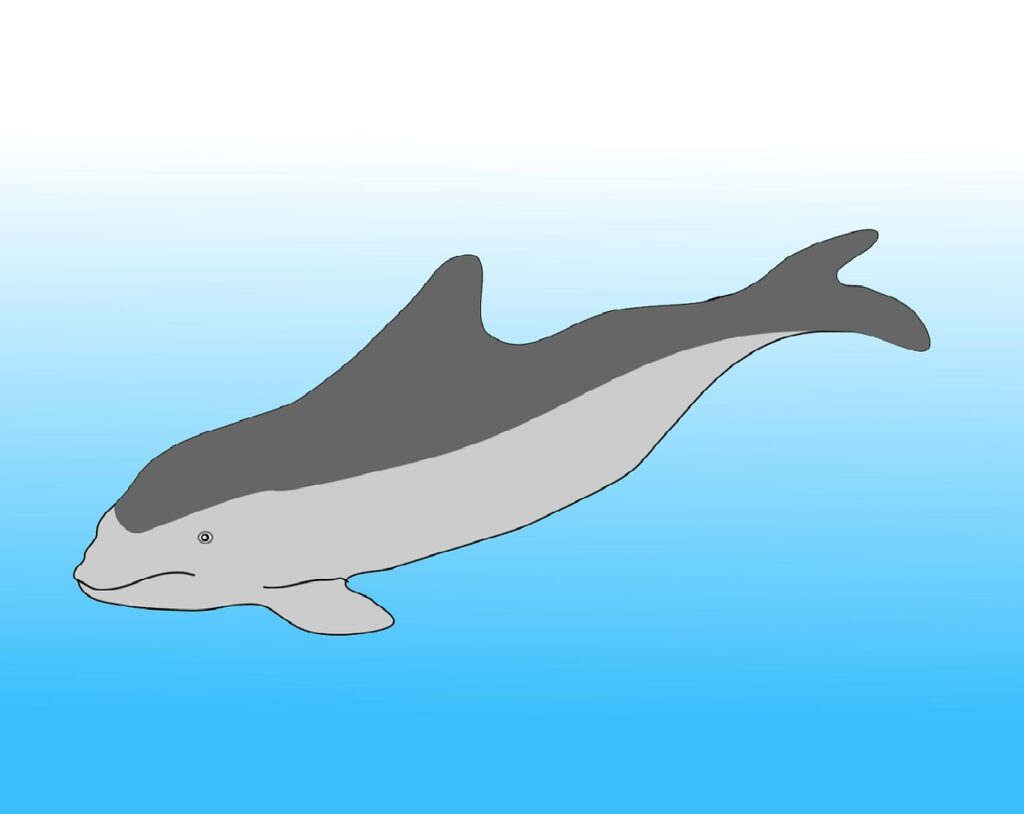
The state of the endangered vaquita species is of great importance, and so effective steps must be taken to protect them. The Mexican government has put in place bans on fishing and surveillance systems to stop illegal fishing.
International organisations, including conservation groups, researchers, and government agencies, are taking part in collaborative initiatives to make people aware of the vaquita’s crisis. Scientists are researching alternative fishing methods that reduce vaquita bycatch, while still allowing local fishermen to make a living.
Financial aid is being offered by various groups to help support conservation efforts to look after the vaquita habitat and promote sustainable fishing practices. Challenges in conserving the vaquita population include lack of funds, difficulty in monitoring illegal fishing, and the need for international cooperation.
Public participation is important too, to raise awareness about vaquitas and encourage responsible marine stewardship. It is essential to enforce existing regulations, and have collaboration between different stakeholders, for successful conservation.
The Importance of Saving the Vaquita
Saving the Vaquita is of utmost importance! With only a few dozen left in existence, this unique marine mammal is on the brink of extinction. It is our responsibility to take action and ensure their survival.
The Vaquita, also known as the “panda of the sea,” is a small porpoise that lives in the Gulf of California. Their population has been severely affected by illegal fishing practices, mainly for the totoaba fish. The Vaquita often become entangled and drown in the gillnets meant for catching totoaba.
The decline of their population not only puts them at risk but also disrupts the balance of marine ecosystems. As apex predators, they play a crucial role in healthy oceanic environments. If they disappear, it will have far-reaching consequences on other marine species and even local communities that depend on fishing for their livelihoods.
Efforts have been made over the years to save the Vaquita, such as establishing protected areas and banning gillnet fishing. However, these measures alone are not enough. We need collective action and awareness from governments, organizations, and individuals to enforce stricter regulations, monitor fishing activities, and promote sustainable fishing practices.
We cannot let future generations miss out on witnessing these magnificent creatures in their natural habitat. We must all come together with determination and compassion to save them before it’s too late. Let us make our voices heard, spread awareness, support conservation initiatives, and put pressure on authorities to take strict measures immediately. Every individual action matters in preserving this remarkable species for generations to come.
Frequently Asked Questions
Q: What is a vaquita?
A: A vaquita is a small porpoise species native to the Gulf of California. It is the world’s most endangered marine mammal.
Q: How many vaquitas are left in the wild?
A: According to recent surveys, there are estimated to be fewer than 10 vaquitas remaining in the wild, making them critically endangered.
Q: What is the main threat to vaquitas?
A: The main threat to vaquitas is accidental entanglement in fishing gear, particularly in gillnets used by illegal fishing operations in their habitat.
Q: What measures are being taken to protect vaquitas?
A: Conservation efforts to protect vaquitas include banning gillnet fishing in their habitat, increasing enforcement against illegal fishing, and supporting alternative livelihood options for local communities.
Q: Can vaquitas be kept in captivity?
A: Vaquitas have not been successfully kept in captivity, and attempts to do so have resulted in their deaths. Therefore, conservation efforts focus on protecting their natural habitat.
Q: How can individuals contribute to vaquita conservation?
A: Individuals can contribute to vaquita conservation by raising awareness about the species, supporting organizations working towards their protection, avoiding consumption of seafood caught using gillnets, and advocating for sustainable fishing practices.
Conclusion
The vaquita is a critically endangered porpoise only found in the Gulf of California. It is declining quickly due to illegal fishing and habitat destruction. To save it, there are fishing bans and protected areas. But, fast action is needed.
The vaquita’s extinction isn’t just bad for its species, but the whole marine ecosystem. It is essential for the biodiversity of the oceans.
Unfortunately, efforts to protect the vaquita have been difficult. Fishermen often catch vaquitas when targeting the totoaba, an endangered fish with a valuable swim bladder. Despite this, organizations such as Sea Shepherd Conservation Society are working hard with local authorities to stop illegal fishing and make people aware of the vaquita.
Research by VaquitaCPR has found that only 10 individuals are left. This shows how urgent it is to save this species from disappearing forever.
References

